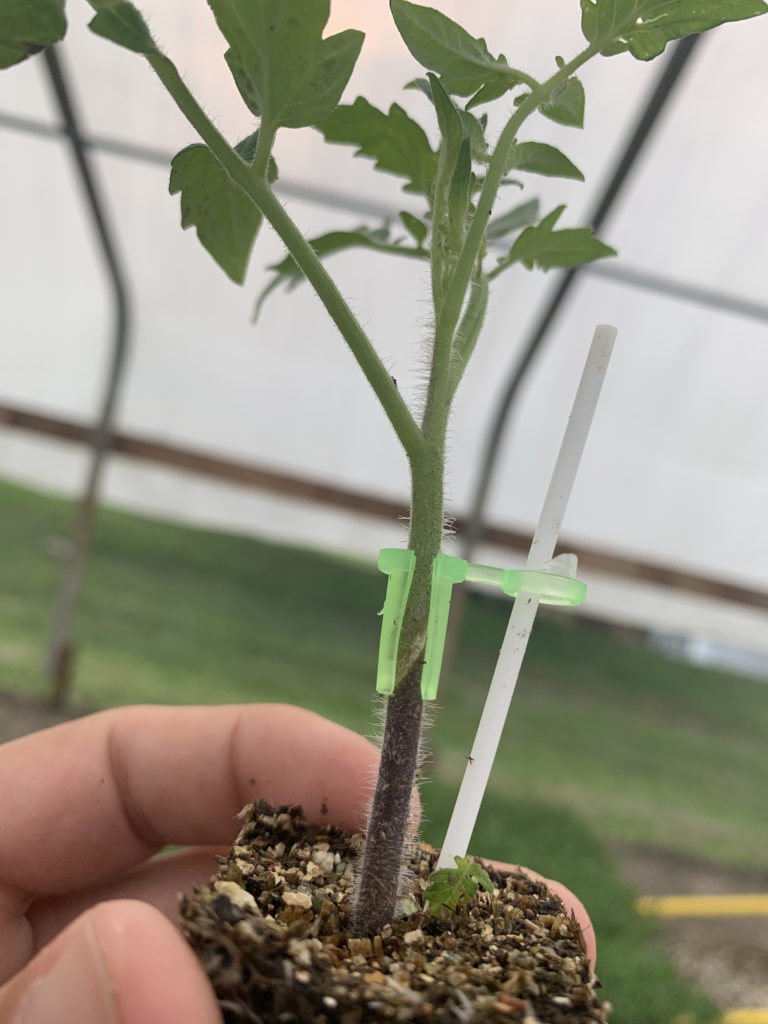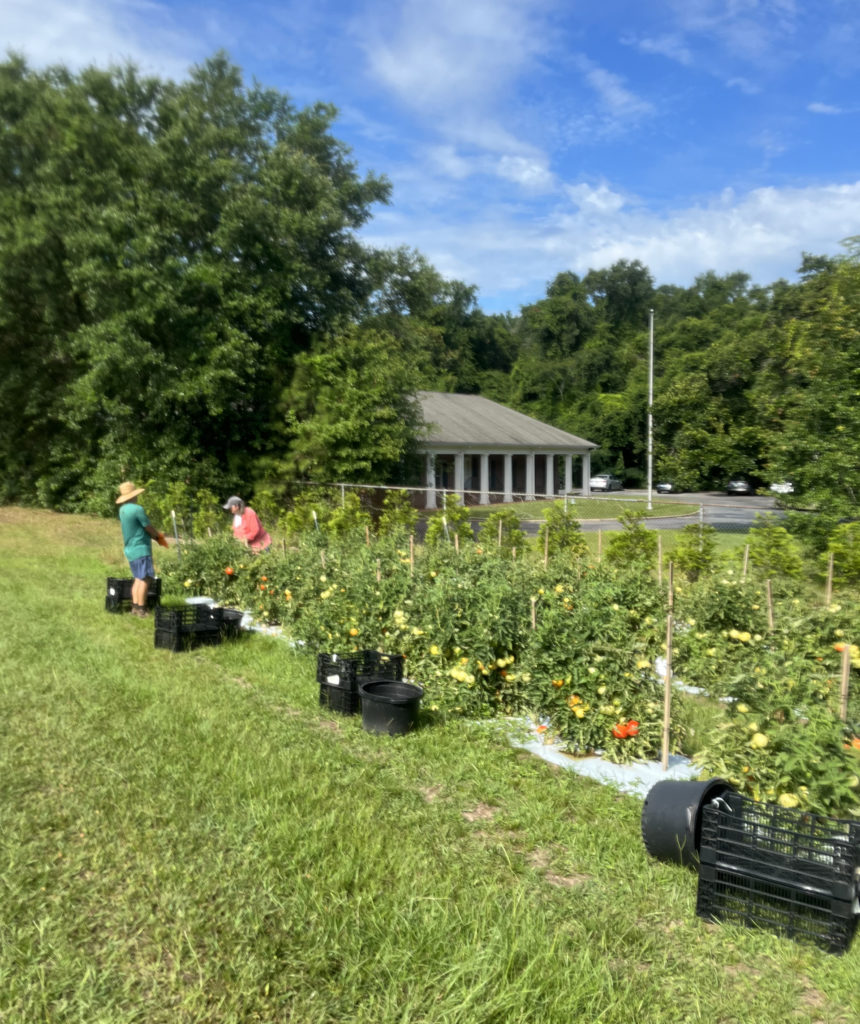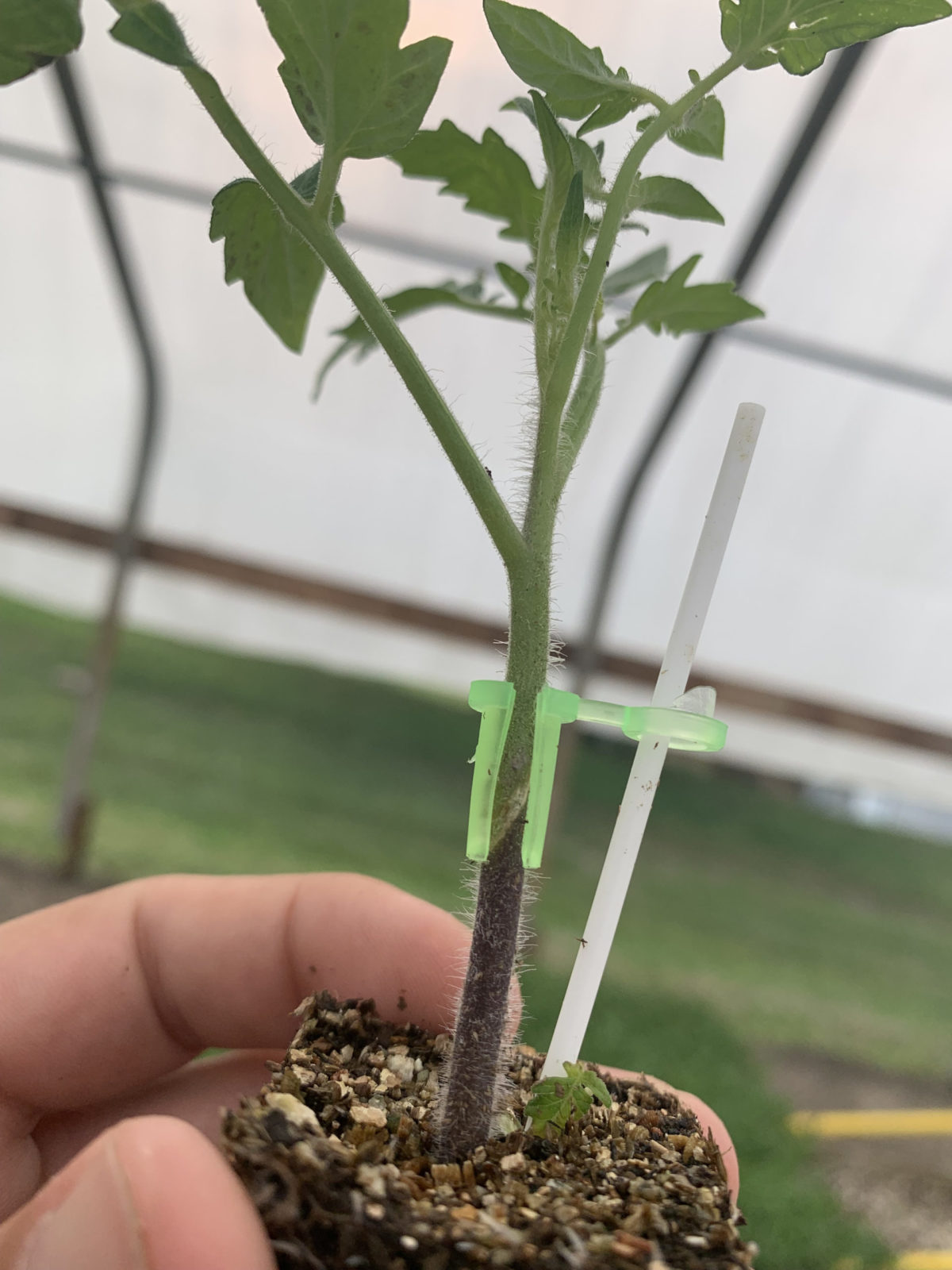By Clint Thompson
Grafting tomato plants may be an expensive venture for commercial growers, but they will be the ones laughing at the end, capitalizing with fruit when supply is limited.

Jacob Kelley, Alabama regional Extension agent, encourages his producers to adopt the practice to help overcome diseases that are prevalent in South Alabama.
“A lot of these diseases and insects that spread the diseases don’t really get killed off in the winter every year. I’ve had guys tell me multiple times, ‘I’m done growing tomatoes.’ I convince them to try something new. They’ll do it reluctantly and have some success, but then say, ‘It’s too hard.’ ‘I have to spray too much,’” Kelley said. “(The price to graft) is a bite early on in the season. I try to convince them that if they take that bite now, it’ll taste a lot better at the end of the season when you’ve still got tomatoes and everybody else has petered out.”

Kelley conducted a tomato research trial to emphasize the fact that farmers can grow tomatoes and produce them well. But it may require the grafting technique.
“We’re taking two plants and making them one and getting the benefit of both. The roots come from one plant and that will be our rootstock. These rootstocks were resistant to bacterial wilt and a host of other diseases for the most part, and they had larger root systems on them,” Kelley said. “They don’t grow very good fruit and it’s not edible fruit, or it’s very low quality. We don’t grow those plants on their own. We graft what we want to grow, what we want to harvest, the tomato we want to sell and market. We graft that and attach it to the top of that rootstock.”
Kelley said there is a learning curve to perfect the grafting craft. Farmers can order plants already grafted, but it is very expensive. Kelley said his plants cost between $1.30 and $1.80 per transplant, plus shipping. That is compared to approximately 15 cents for regular plants.
But Kelley said there were between 19% and 29% more tomatoes by number on plants grafted than non-grafted plants.










